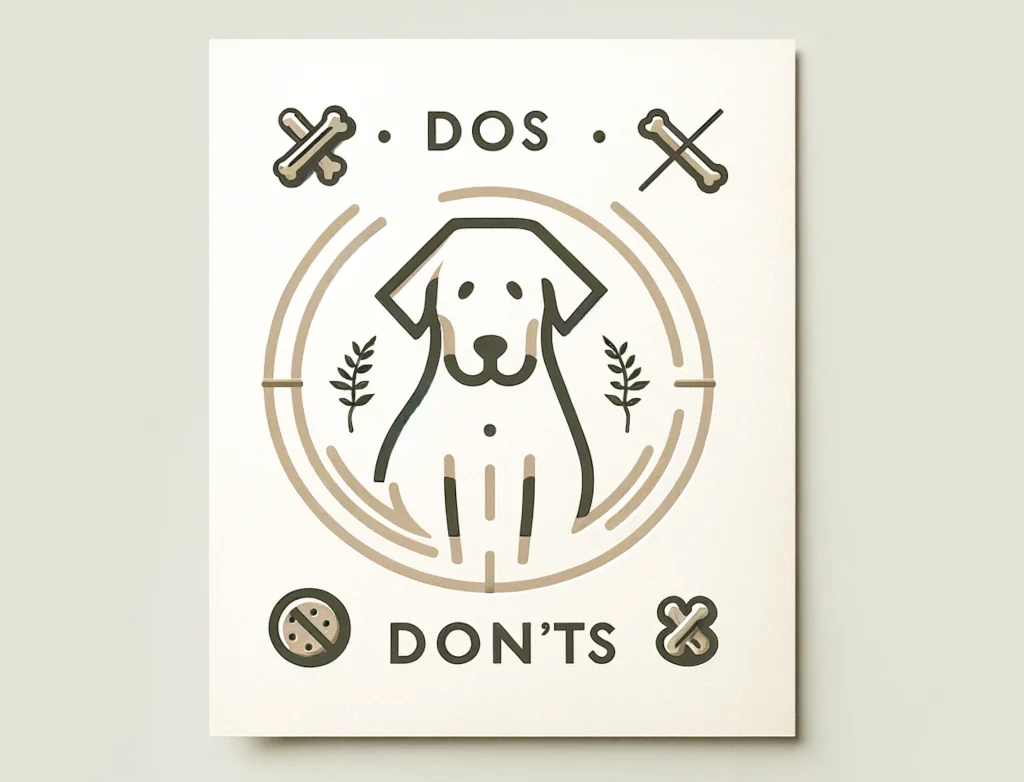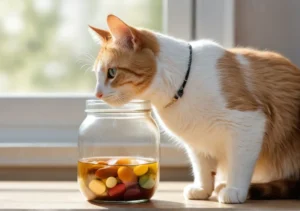There’s a fine line between treating your dog and over-treating them, and finding that balance can sometimes feel like you’re trying to solve a Rubik’s cube in the dark. As loving pet parents, we’ve all been there, hovering over the treat jar, trying to decipher the do’s and don’ts like it’s canine hieroglyphics.
In this post, you’ll discover the golden rules for rewarding your furry friend, ensuring that treats remain a treat and don’t turn into trouble.
Key takeaways:
- Opt for healthy, low-calorie treats like baby carrots or dehydrated sweet potato chews, and keep treats under 10% of your dog’s daily calorie intake.
- Use treats strategically for training, sticking to small sizes to maintain focus, and mix up where you keep them to keep your dog attentive to you.
- Avoid toxic treats like chocolate and xylitol, and monitor your dog for signs of overfeeding, adjusting their diet with help from your vet if needed.
What Are the Best Treats for My Dog’s Health?
When it comes to rewarding your furry best friend, it’s crucial to choose treats that are as kind to their body as they are tempting to their taste buds.
Healthy dog treats are typically low in calories and high in nutritious value. Think of treats like crunchy baby carrots, fresh green beans, or slices of apple (without the seeds, of course) as excellent options that offer vitamins without the extra fat.
Natural treats often come out on top for being the best pick in the treat aisle. These are the goodies that keep things simple – they’re made with whole food ingredients and have minimal processing. For example, dehydrated sweet potato chews can be a fantastic choice for dogs needing a low-fat, high-fiber treat.
It’s always a smart move to chat with your vet, especially if your dog has specific dietary needs or restrictions. If you’ve got a pup who’s on the sensitive side or one that’s watching their weight, they can steer you toward the right snack options, tailoring advice to your dog’s breed, age, and health profile.
How Often Should I Give My Dog Treats?
Let’s face it, those puppy dog eyes can be hard to resist, but balance is key when it comes to treat time. Treats should be just a small part of your dog’s overall diet – most experts agree they shouldn’t make up more than 10% of your dog’s daily calories. The rest should come from a well-balanced, nutritionally complete dog food.
To weave treats into a healthy lifestyle, pay attention to your dog’s activity level. A more active pooch may afford a few extra treats due to their higher caloric burn. But remember, everything in moderation. A good guideline is to offer treats as a small reward – perhaps after a vigorous game of fetch or a successful training session. This way, you can keep those extra calories in check while still showing love to your furry pal.
Can Treats Be Used for Training and Bonding?
Certainly! Treats are like gold when it comes to training. They’re the little edible encouragements that can help your dog learn new tricks and better behavior. But not all treats are created equal when in training mode.
It’s wise to opt for smaller, low-calorie treats that won’t distract your dog from the task at hand. Think tiny but tasty – training-specific treats that are just big enough to get their attention, without making them forget why they’re sitting and staying in the first place.
Timing is everything. Offering a treat right after your dog does something right helps cement the good behavior. It’s a clear signal that they’ve hit the jackpot, and it’ll encourage them to do it again. Plus, it’s a fantastic way to deepen your bond. Those training moments spent together are golden threads in the fabric of your relationship.
And here’s an insider tip: Keep your treat-dispensing hand a secret. If you’re always reaching into the same pocket or drawer for a treat, dogs become great detectives, associating the location with the reward. Instead, stash treats in various places or keep them hidden on your person. This way, your dog’s focus stays on you – not where the treats are lurking.
Remember, there’s more to come on this topic so your dog can reap the rewards of each treat they munch. Happy treating!
Are There Any Treats I Should Avoid Giving My Dog?
When it comes to treating your furry companion, it’s better to be safe than sorry. Several common household foods and store-bought treats might look tempting but can be downright dangerous for your pooch. Let’s chew over a few that you should steer clear of:
- Chocolate: It’s not just a sweet no-no; it’s a big no-no. Theobromine, an alkaloid found in chocolate, is toxic to dogs and can cause a range of symptoms from vomiting to serious cardiac issues.
- Xylitol: This sugar substitute is found in many sugar-free products. Unfortunately, it’s also one of the leading causes of dog poisonings. Even small amounts can cause hypoglycemia, seizures, liver failure, or worse.
- Grapes and raisins: Don’t let their size fool you; these fruits can cause kidney failure in dogs.
- Onions and garlic: Keep the aromatics for human dishes. They can destroy a dog’s red blood cells, leading to anemia.
- High-sodium snacks: Salt should be taken with, well, a grain of salt. Too much sodium can lead to excessive thirst, urination, and even sodium ion poisoning.
Always do your homework and read labels religiously. If you’re ever in doubt, a quick online search or a call to your vet can spare you from a world of worry.
Remember, the treat aisle at the pet store doesn’t always equate to safe options. When it comes to some commercially produced treats, the FDA has issued warnings about certain ones linked to illness in pets, particularly those that are imported. You can keep tabs on these alerts at the FDA’s pet food recall page.
How Can I Ensure I’m Not Overfeeding My Dog with Treats?
It’s easy to get carried away when those puppy eyes are looking up at you. But mind you, too many treats can lead to a pudgy pooch, and that’s no walk in the park. Here’s how you can ensure your dog stays healthy and happy, without depriving them of the odd treat:
- Set a treat budget: Just like you’d track your own calories, keep tabs on your dog’s treat intake. Treats should make up no more than 10% of their total daily calories.
- Smart substitutions: Use veggies like carrots or green beans as low-calorie treats. They’re crunchy, healthy, and most dogs love ’em!
- The hand that feeds: Try using your dog’s regular kibble as a treat during training sessions. They’ll hardly know the difference, and it helps keep their diet consistent.
Pay attention to the signs of overfeeding, such as weight gain, reluctance to exercise, or difficulty breathing. These could all signify that it’s time to cut back on the treats. Speak to your vet if you’re unsure about your dog’s dietary needs – they can provide tailored advice based on breed, age, and activity level.
And here’s the insider scoop: Many folks don’t consider the caloric intake from chewable dental sticks. Sure, they’re great for oral health, but they can pack a punch in the calorie department. Try breaking them in half or opting for dental chews specifically designed to be low in calories.
By staying vigilant and clever about your dog’s treat consumption, you’ll ensure those tail wags don’t turn into unwanted waddles. Keep the happiness high and the treats, at least proportionally, on the low. Remember, a healthy dog is a happy dog, and that’s the ultimate treat for both of you.
Alex, a passionate animal lover, has experience in training and understanding animal behavior. As a proud pet parent to two dogs and three cats, he founded AnimalReport.net to share insights from animal experts and expand his knowledge of the animal kingdom.





